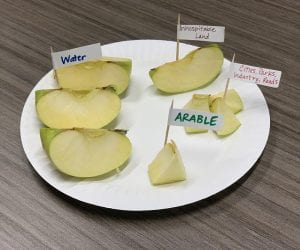People are united everywhere by a set of basic needs. These needs are key requirements not just for essential survival, but for long-term physical and mental well-being. As the world expands and changes, the definition of basic needs expands and changes as well. For instance, something like the Internet would not have been considered a “need” 20 years ago, but in 2019, Internet access is crucial to ensuring access to information for people everywhere.
The definition of a basic need is anything that is fundamentally connected to an individual’s physical or mental well-being.
These are humans’ six basic needs in the 21st century
1. Food
Food is the basic source of energy and one of the most immediate requirements for day to day survival. The energy that food gives us is measured in calories and the number of calories a person needs is typically around 2000-2500 calories a day.
2. Drinking Water and Sanitation
Drinking water is water that is free of disease or pollutants, and is safe to be used for drinking or food preparation. Sanitation refers to services and facilities that properly dispose of human waste.
3. Healthcare
Healthcare is consistent access to medical treatment from trained professionals. Sufficient healthcare both treats immediate conditions and provides ongoing support to prevent future ailments.
4. Shelter
Shelter is a permanent structure where people can take refuge from adverse weather and other outside conditions. Adequate shelter is durable, provides some degree of privacy, and is connected to the infrastructure of surrounding communities.
5. Education
Education is the process of teaching and learning critical skills including literacy and mathematics. Education boosts quality of life and is a necessary prerequisite for long-term self-sufficiency.
6. Access to Information
Access to information is a person’s ability to freely find and use information and make independent decisions on the basis of that information. Today, much of that access is facilitated through the Internet.
Meeting people’s needs now and in the future
International organizations continually reassess what a person needs to be fully integrated into our global society. When the United Nations first proposed this list of basic needs in the 1970s, the world looked significantly different than it does in 2019—among other things, the world population was less than half of what it is today. Even now, meeting these basic needs requires different things for different people: shelter should always be safe and durable, but what that means in southern Florida is not the same as what it means in Alaska.
Stay tuned for a follow-up post where we’ll explore the current status of each of these basic needs for people around the world, given today’s realities and projections for the future.



